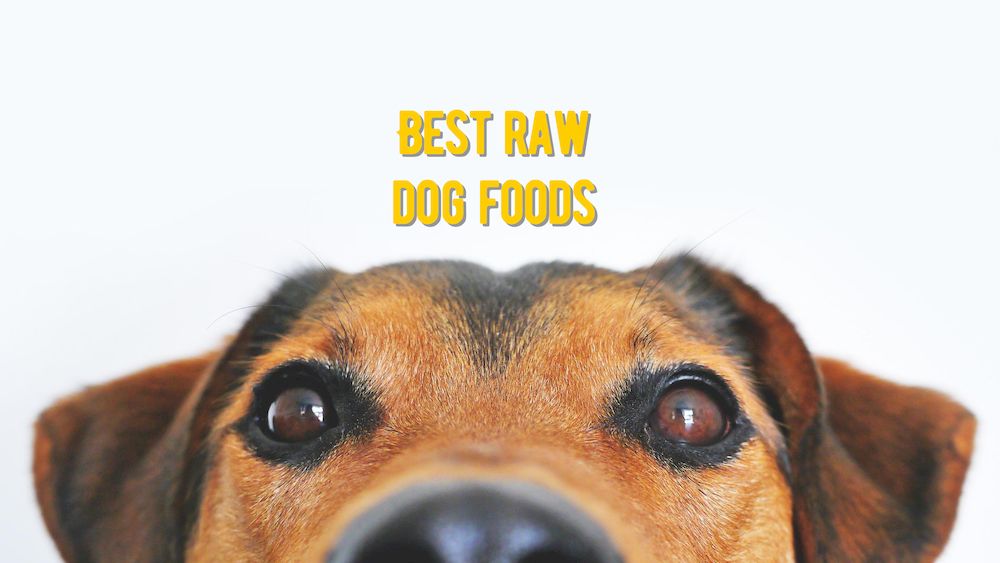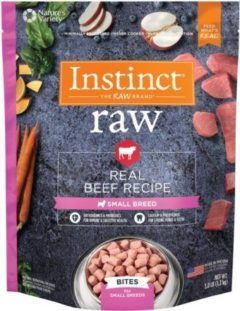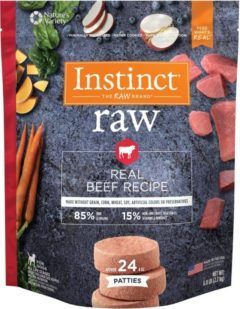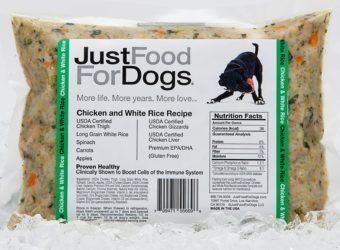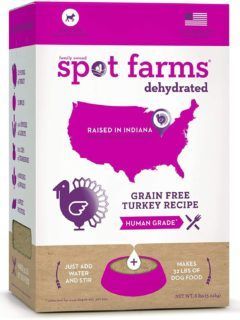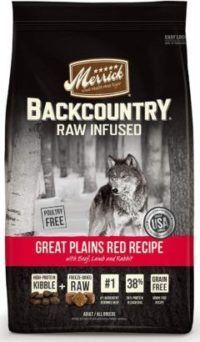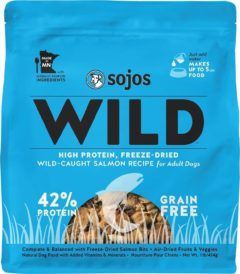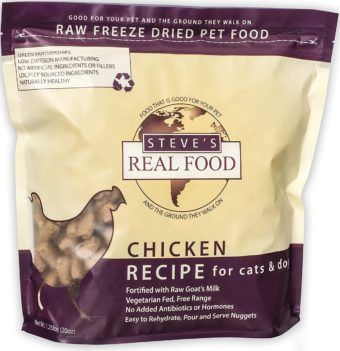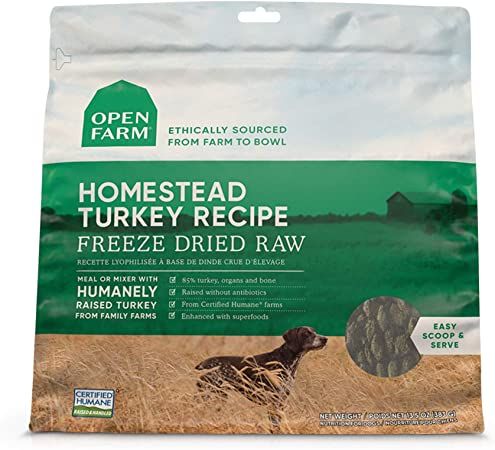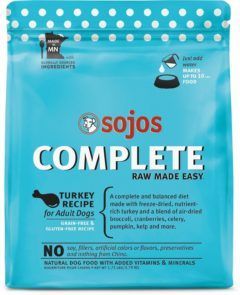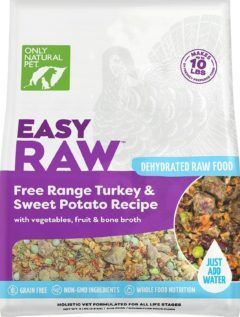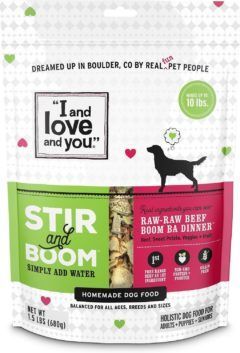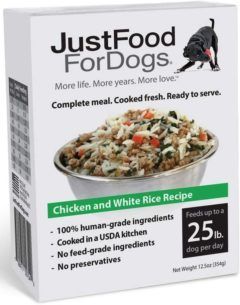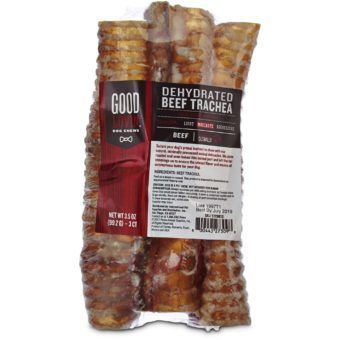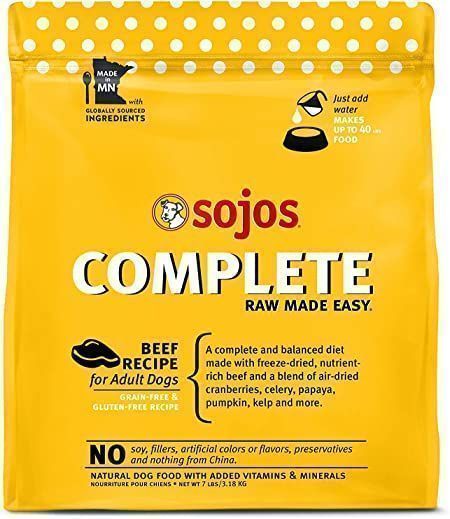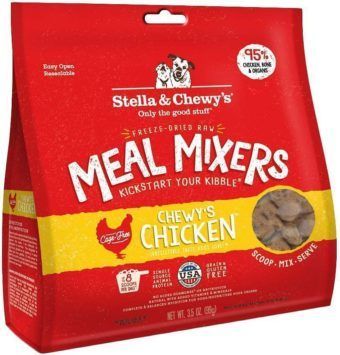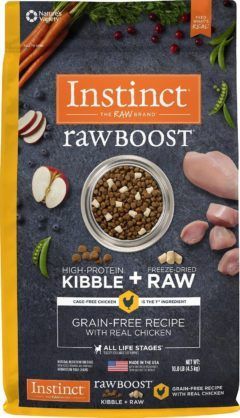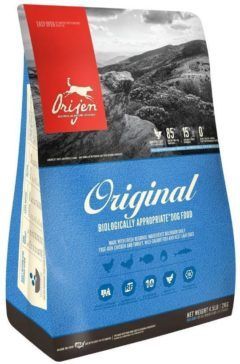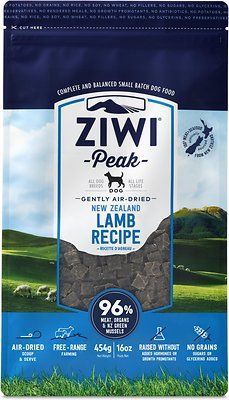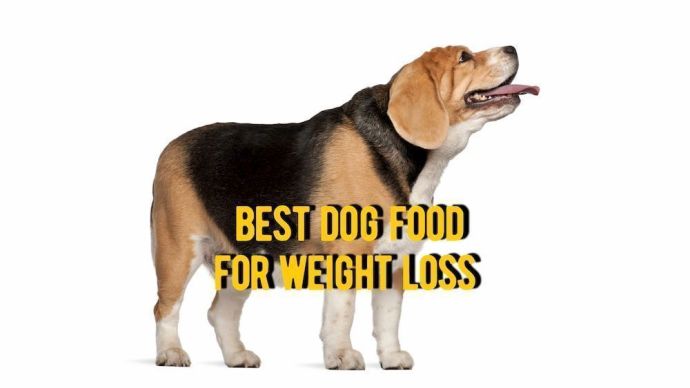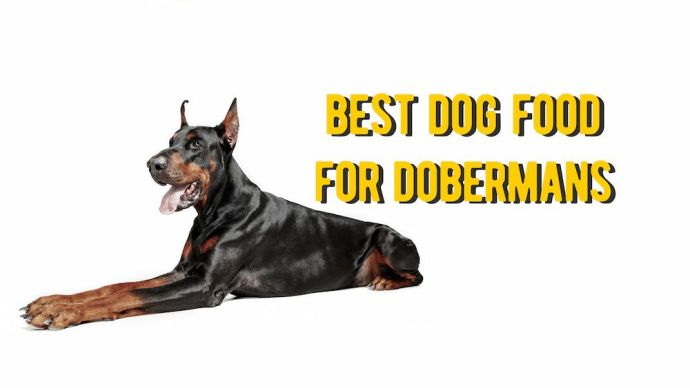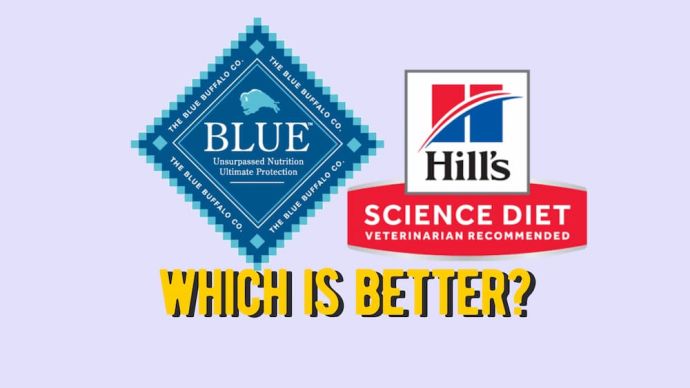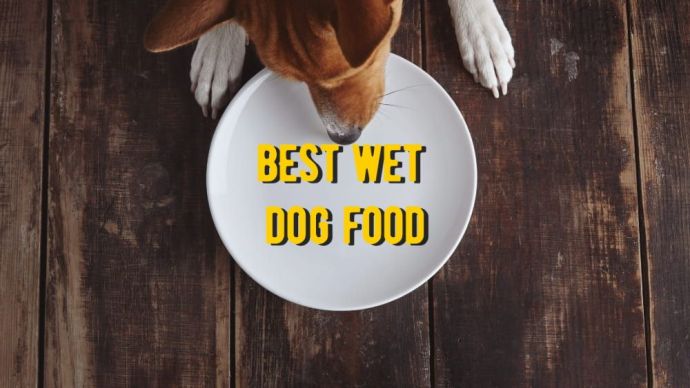The 20 Best Raw Dog Food (Vet Review)
Written by:
Author: Dr. Linda Simon
Dr. Linda Simon is a veterinary surgeon working with seven years of experience. She is a fellow of the British Veterinary Association and specializing in animal medicine. Also, she has been the Woman magazine resident vet for the past two years and writes a regular column for them, focusing on pets and their health.
View all 30 articlesLearn about our editorial process and veterinary review board.
Viewed: 1207
Updated on: 01/03/2022
Good pet parents never underestimate the role of nutrition in their puppy’s health. It’s why they devote enough time and resources to selecting the tremendous raw dog food brands. If you’re wondering what the most suitable food is, you need to know several categories: frozen, dehydrated, and dried. These pre-made foods are available in the market in commercial quantities.
You need to feed your dog the proper nutrients, so they can grow up healthy and strong. A lot of these foods can nourish your pup regardless of its age or size. If your pet rejects a particular brand, it doesn’t mean you should give up on that category of raw dog food. You may just need to switch brands to find the type they’ll love. Since only the best brands are featured in this review, you can be sure they’ll contain the essential vitamins, minerals, and nutrients for your pet’s health.
A word of caution: Raw feeding is not for everyone and is not decided to be taken lightly. It takes owner commitment and may not agree with every individual dog.
Most of the foods reviewed in this article can be eaten as a complete meal. They can also be used as mix-ins or as toppers to add more flavor to other meals. If you’re just switching to a particular brand and your dog seems to show some side effects, give it time to conclude that it is terrible for your dog. Remember, any diet change should be done gradually over 3-5 days, or a stomach upset may well occur. If your dog has some allergies or sensitivities, specific food types that claim to be suitable for such conditions that users have corroborated.
You can be sure that regardless of your dog’s taste or individuality, there are foods out there suitable to its palate, and this is a review of most of the available options. This article contains reviews and covers raw foods for dogs of all life stages, weights, and sizes.
Designing a raw food diet at home is NOT recommended as it is nearly impossible to create a balanced one for each life stage of your dogs, so vets will always advise if you are raw feeding to use a nutritionally balanced, pre-prepared option such as those listed below.
The Best Raw Dog Food Product (Full Reviews)
Our TOP-7 Choices
1. Instinct Frozen Raw Bites Grain-Free Cage-Free Chicken Recipe Food
Key Benefits:
- Rations contain essential vitamins and minerals.
- Meal promotes healthy teeth and gums, and lean muscles.
- Protein-packed with meat and organs.
- Has no grains or fillers.
- Uses whole-food ingredients like cage-free chicken.
- Retains nutrients through cold-pressure processing.
- Raw natural bites minimally processed for optimal health.
Pros
Cons
- Grain-free recipes, which may be beneficial for those dogs who are sensitive to grains.
- Suitable for small, medium and large breeds.
- Raw ingredients are preserved through cold-processing.
- Made with cage-free chicken, non-GMO vegetables, fruits and wholesome ingredients.
- Not found.
2. Instinct Frozen Raw Patties Grain-Free Real Beef Recipe Dog Food
Key Benefits:
- Contains natural beef, with non-GMO vegetables.
- Packed with necessary nutrients for healthy and strong dogs.
- Provides protein and energy levels for your pup.
- Contains essential vitamins and minerals for general well-being.
- Suitable for older puppies.
- Promotes lean muscles.
Pros
Cons
- Chicken is the main ingredient.
- Made from healthy raw ingredients.
- Suitable for older puppies.
- Takes time to thaw compared to pellets.
3. Instinct Frozen Raw Bites Small Breed Grain-Free Real Beef Recipe Food
Key benefits:
- High-quality protein derived from natural beef.
- Contains no grain, wheat, soy or pea so is suitable for those suffering from specific food allergies.
- Promotes lean muscle development, and may aid your dog’s digestion.
- Contains nutrition for dental health and digestion.
- Helps to boost your dog’s energy levels.
- Available in bite size for small dogs.
- Natural and minimally processed ingredients.
Pros
Cons
- Made from uncooked, pure, and real ingredients.
- Perfect for small breed sizes.
- A 3-pound bag can yield 12 bites.
- Nutritious for developing healthy teeth and gums.
- Boosts overall energy levels.
- Some users claimed it gave their dogs loose stools.
4. JustFoodForDogs Daily Diets Chicken & White Rice Frozen Food
Key benefits:
- Ideal for growing puppies and adults.
- Suitable for dogs with sensitive GI tracts or stomachs.
- Does not contain allergens.
- Made from real chicken.
- Contains no preservatives or coloring.
- Suitable for all breeds.
Pros
Cons
- Easy to digest.
- Ingredients are USDA certified.
- Chicken is the first ingredient.
- Chicken has been pureed.
5. Spot Farms Human Grade Dog Food, Natural Dehydrated Dog Food
Key Benefits:
- Dehydrated with probiotics to enhance digestibility.
- Contains only real meat.
- Can be used as a complete meal, mix-in, or topper.
- Meets with the standard of edible human food.
Pros
Cons
- Produced in the USA with cage-free, Indiana-raised ducks.
- Has no by-products, colors or preservatives.
- Contains nutrients for building the digestive system.
- Some owners complain that it does not smell much of a smell and feel their dogs do not enjoy the taste.
- Food may be too watery and cause loose stool.
6. Merrick Backcountry Freeze-Dried Raw Great Plains Red Recipe with Beef, Lamb & Rabbit Grain-Free Dry Food
Key benefits:
- The first ingredient is deboned beef which your dog will love.
- Made from a grain-free formula for easier digestion.
- Rich in Omega fatty acids for healthy skin and shiny coat.
- Made in Merrick’s Texas facility.
Pros
Cons
- Made from real beef.
- Has no artificial flavors or colors.
- Contains chondroitin and glucosamine for healthy hip and joints function.
- Contains minimal raw dried pieces.
7. Sojos Wild-Caught Salmon Recipe Grain-Free Freeze-Dried Raw Dog Food
Key benefits:
- Raw fish is the primary ingredient.
- Meets the nutritional standard by the AAFCO Dog Food Nutrient Profiles for Adult Maintenance.
- Ethically sourced and produced.
- Contains no grain, gluten or GMO.
Pros
Cons
- Meatier and chunkier nutrition.
- Ready to eat after adding water.
- Rich in high-quality protein.
- Food is watery and soupy.
The Best Freeze-Dried Foods
1. Steve’s Real Food Freeze-Dried Raw Nuggets
Key benefits:
- Easy-to-access raw meals.
- Fortified with essential vitamins and minerals.
- Contains kelp and sea salts for trace mineral.
- Pesticide-free raw fruits for anti-carcinogenetic purposes.
Pros
Cons
- Rehydrates easily.
- Made from raw vegetarian-fed meat.
- Antibiotic-free and Hormone-free meat.
- Some dogs become lethargic after eating it (A number of owners have reported lethargy after their dog eating this food, but it is unclear if this is related).
2. Open Farm Freeze-Dried Raw Grain-Free Dog Food
Key benefits:
- Contains 80% protein derived from animal sources.
- Grain, wheat, and soy-free.
- Contains ‘superfood’ toppings such as coconut oil and turmeric.
Pros
Cons
- Made from ethically raised meat.
- Free from hormones or antibiotics.
- It’s relatively expensive.
3. Sojos Complete Natural Freeze-Dried Natural Raw & Dehydrated Grain-Free Food
Key Benefits:
- A grain-free, gluten-free and GMO-free recipe.
- Recipes are now meatier and chunkier, especially for adults.
- Has a great taste.
- Easy to prepare and ready in minutes.
Pros
Cons
- Easy to digest.
- Ingredients are USDA certified.
- Chicken is the first ingredient.
- Food to water ratio makes it watery and soupy.
4. Only Natural Pet EasyRaw Turkey & Sweet Potato Raw Grain-Free Dehydrated Food
Key Benefits:
- Made with minimally processed real and raw nutritious ingredients.
- Freeze-dried raw meat creates a species-appropriate diet.
- Grain and GMO-free.
- Follows holistic vet formula as a source of animal protein.
- Contains no artificial flavors, colors or preservatives.
Pros
Cons
- Free-range turkey and grain-free vegetables are primary ingredients.
- Contains essential nutrients for healthy skin and coat.
- Made with grain-free ingredients like apples, cranberries and broccoli.
- Has a strong parsley smell which some dogs may dislike.
- Product is powdery and some will find the texture unpleasant.
The Bests for Dogs with Allergies and Sensitivities
1. I and Love and You Stir & Boom Raw Raw Beef Boom Ba Dinner Grain-Free Dehydrated Food
Key benefits:
- The first ingredient is delicious free-range beef.
- Suitable for dogs of all ages.
- Contains fruits and vegetables acting as fiber and natural oxidants.
- Contains low glycemic ingredients.
Pros
Cons
- Suitable for dogs with sensitive stomachs.
- Contains no grains, corn, soy or wheat.
- Minimally processed with dehydration methods.
- Texture is inconsistent.
- Some owners complain that the chunks take too long to soften.
2. JustFoodForDogs Pantry Fresh Chicken and White Rice Food
Key benefits:
- Made with 100% USDA Certified chicken.
- Contains no preservatives or growth hormones.
- Nutritionally balanced to promote overall dog health.
Pros
Cons
- Fresh but nonperishable.
- Suitable for all life stages.
- Contains no BHA, BHT or artificial flavors. BHA and NHT are preservatives that are potentially carcinogenic.
- Some owners report low palatability.
The Best Raw Treats
1. Good Lovin’ Dehydrated Beef Trachea Dog Chews
Key benefits:
- Chewing helps to strengthen jaw muscle.
- It cleans teeth and gums as they chew.
- It is suitable for all life stages.
- Beef tracheas are full of crunchy-chewy flavor.
- Chew Type: Moderate.
- Satisfies dogs instinct to chew.
Pros
Cons
- Sourced globally.
- Suitable for all life stages (from 3 months).
- Contains no BHA, BHT or artificial flavors.
- Some dogs don’t eat it.
- Possible choking hazard, especially in smaller breeds.
2. Sojos Complete Natural Freeze-Dried Natural Raw & Dehydrated Grain-Free Food
Key benefits:
- Formulated for adult maintenance.
- Completely grain-free, gluten-free and GMO-free.
- Made primarily from beef.
- Nutritional level meets AAFCO requirement.
Pros
Cons
- Easy to prepare this delicious meal.
- Suitable for older pups.
- Bigger chunks of meat.
- Food is watery and soupy.
The Bests for Sensitive Stomachs
1. Stella & Chewy’s Chicken Meal Mixers Freeze-Dried Raw Food Topper
Key Benefits:
- The first ingredient is cage-free chicken for optimal nutrition.
- Contains no grain, gluten, preservatives or fillers.
- Suitable for pups with a sensitive stomach.
- Made from 100% organic-certified fruits and vegetables.
Pros
Cons
- All ingredients are sourced from ethical suppliers.
- Real canine nutrition for picky eaters.
- Some buyers complained about product volume.
- Suitable for all breed sizes.
2. Instinct Raw Boost Grain-Free Recipe with Real Chicken & Freeze-Dried Raw Pieces Dry Dog Food
Key Benefits:
- Enhanced nutrition with high-protein kibble.
- The first ingredient is cage-free chicken.
- Includes a probiotic boost for digestive health.
- Contains higher levels of omega fatty acids for healthier skin and coat.
- Contains no artificial colors or preservatives.
Pros
Cons
- Rich in antioxidants for immune health.
- Packed with animal protein for strong and lean muscles.
- Produced without grain, potato, corn, wheat, or soy, which may benefit some dogs with food allergies or intolerances.
- Most dogs love the taste.
- Some dogs have diarrhea after eating this food.
3. Orijen Freeze-Dried Dog Food, Original, Biologically Appropriate & Grain Free
Key Benefits:
- Retains the natural nutrients of a wild canine diet.
- Freeze-dried with natural preservatives.
- Contains poultry, fish, organs, bones and cartilage for the delicious taste your dog(s) love.
- It can be served as a whole meal or used as a topper.
- Made with raw and unprocessed meat.
Pros
Cons
- Rich in antioxidants for digestive health.
- Contains no synthetic chemicals or preservatives.
- Quick and easy to prepare.
- Some dogs won’t eat it according to their owners.
The Bests for Heart Health
1. Ziwi Peak Air-Dried Dog Food Recipe
Key benefits:
- Air-dry natural preservation method to retain nutrients and maximize flavor.
- Major ingredients are fresh meat, organs, and bones.
- The recipe also contains ‘superfoods’ such as organic kelp, green mussels, and green tripe.
- It doesn’t include Peas, Legumes or Potatoes which is useful for those dogs with specific food allergies.
- Made with ethically sourced and sustainable ingredients.
Pros
Cons
- It is nutrient-dense and can be served as a topper.
- Made with meat containing no antibiotics, hormones, or growth-promoting elements.
- Helps to promote allergy relief and healthy skin in some individuals.
- Provides higher Taurine levels to promote heart health.
- May improve digestion, joint health and mobility in certain dogs.
- Pieces are now brittle, not just soft.
- May cause loose stool in some.
2. Primal Freeze-Dried Dog Food Chicken Formula
Key benefits:
- Meat ingredients contain no antibiotics or added hormones.
- A suitable nutritious diet for all life stages.
- First ingredient is chicken raised without hormones or antibiotics.
- Naturally derived vitamins and minerals.
- Grain, corn, gluten, wheat, and soy free.
Pros
Cons
- Ethically sourced suppliers and ingredients.
- Contains natural flavors and nutrients
- Rich in high-quality protein.
- Some owners describe it as too powdery.
READ MORE: Wet vs Dry Dog Food – which is better?
Expert Advice on Raw Dog Food
With so many commercial diets competing for our attention, as dog owners, it’s important to understand how to make the right decision for our pets in this crucial area. In this section, we are going to take a look at what we know about canine nutrition from a medical perspective, and how this can help us choose the right diet for our dogs.
Canine Nutrition
READ MORE: Sick Puppy 101
From the body’s nutritional perspective, your dog’s diet needs to provide all the nutritional components that it needs for maintenance as well as any other physical needs such as growth, pregnancy or lactation as appropriate. These nutritional materials include proteins, carbohydrates, fats, fiber, vitamins and minerals. Each component has its own function within the body: fats and carbohydrates are used for energy; proteins are broken down into their building blocks and reassembled to produce the specific proteins needed for maintenance and growth, and vitamins and minerals have their own specific roles. Some of these materials can be stored in the body, such as fats, whereas others like certain vitamins can only be accessed by the body while they are in the bloodstream, and if they are not used they are passed out in the urine.
Deficiency in any aspect of these macro- and micro-nutrients will impede your dog’s long-term physical maintenance and ultimately impact on their health, albeit the symptoms may not be immediately visible. Therefore, whatever diet you select for your dog needs to provide the correct balance of nutrients on a daily basis in order to maintain the optimal health of your pet.
Owners should be aware of the potential associated risks, including:
- The contraction of serious foodborne illnesses associated with Salmonella, Campylobacter and other bacteria in both the dogs and the humans of the household (for example, if the dog eats their food which is contaminated and then licks a person).
- The potential for fractured teeth, perforated intestines, or intestinal obstruction from any bone or cartilage contained, especially in smaller breeds and younger dogs.
- Many owners assume feeding a raw diet will cure a number of health issues such as atopic dermatitis and food allergies, but this has simply not been proven and we should not be tempted to feed a raw diet and delay seeking treatment for these health issues.
- Owners who decide to raw feed must employ strict hygiene at every meal, including disinfecting all surfaces, thoroughly washing hands after handling the food and carefully refrigerating and disposing of any leftovers. On top of this, owners should wash their hands and face after being licked by their dog, particularly the very young and very old, or those who are immune-suppressed or on chemotherapy.
READ MORE: Best Low Fat Dog Foods
FAQ
🥩 Is a Raw Diet better for Dogs?
Based on what we know about how nutrients are used in the body, the actual format of food is less important than ensuring that the diet includes all the necessary nutrients in the right proportions and amounts in a way that is accessible for the body to absorb and use them.
Our domestic dogs are descended from wild canines like wolves, who hunt prey and eat whatever they catch. As there was clearly no cooking involved in this process, it is easy to conclude that a raw diet is more natural for our dogs than a cooked one. Anyone who has watched a dog chewing on a bone for hours can agree that there is likely to be some instinctive pleasure from this activity that mimics their ancestors’ feeding habits.
That said, it’s important to remember that our dogs’ wild ancestors would have eaten not only the meat from their prey’s muscles, but bones, organs and skin, and so a diet based only on meat does not include all nutritional components discussed above, and ultimately can have a negative impact on your dog’s health. The other point to consider is that wild animals generally do not live as long as their domestic cousins, for a number of reasons including predation and infection, from which we protect the pets under our care. Nutritional deficiencies can also exist in wild populations, and it is not necessarily correct to conclude that wild dogs’ diets are healthier than diets that are appropriately balanced in nutrition based on scientific research.
Another reason owners might choose a raw diet over a commercial diet is that it gives us the control to know exactly what is going into our dog’s nutrition, with no hidden additives, preservatives and other ingredients. It is difficult to say the impact these extra components have on our dogs’ health, as little research has been done in this area, but certainly in human healthcare, a diet from fresh ingredients is known to be healthier than pre-packaged food. For owners who would rather avoid these additives in their pet’s diet, a home-made diet, either of raw or cooked food, can provide a solution. Home-prepared diets can also be a solution for dogs who experience food allergies, as we can make sure to avoid the food they are allergic to.
🛑 What are the Pitfalls of a Home-made Raw Diet for Dogs?
It is definitely possible to create a good, balanced, home-made raw diet for our canine friends, but there are some risks, so doing it right it takes research and preparation; it’s not as straight forward as feeding raw meat bought in the supermarket or from the butchers. As discussed above, this meat comprises only muscle and doesn’t fulfill the nutritional needs of our pets in a complete or balanced way. It is also important to understand that while the process of preparing meat for human consumption is closely regulated, it is deemed safe based on the assumption that the meat will be cooked before eating. We are often reminded to fully cook our meat to prevent illnesses from bacteria such as Salmonella and E.coli, and outbreaks of these illnesses from undercooked meat can be fatal. Dogs can get sick and even die from these same bacteria, as well as potentially passing the infection to members of the household, so feeding shop-bought meat intended for human consumption to dogs without any preparation is very risky.
So the source and types of raw food for a dog’s diet needs to be considered carefully, to make sure the food has as little contamination as possible and is suitable for eating raw, and we also have to ensure we are handling the food in a fully hygienic way so that it doesn’t get contaminated between us buying it and serving it to our pets. We also have to consider how we are going to ensure the balance of other nutrients, vitamins, and minerals in the diet. Bones are an important component of a raw diet but need to be selected carefully to make sure they provide the greatest benefit without becoming a choking hazard or getting stuck in your dog’s intestines. Unlike cats, dogs can also tolerate vegetarian diets and a lot of plant-based foods can be incorporated into the diet if you wish (but make sure not to offer fruit or vegetables which can be toxic to dogs, like grapes, avocado and onions). It is important to get good advice on how to construct a balanced raw diet, and there are a number of supplements available to add to raw meat to help fill in the nutritional gaps.
🤔 What are commercial Raw Food Diets available?
For owners who are keen to feed a raw diet but either don’t want to take the risk of getting the balance wrong or prefer the convenience of a prepared diet, commercial raw food diets come in a variety of formats to make things easier for us. However, it’s important to understand the production process of these diets, especially if the decision to feed a raw diet is based on wanting to know exactly what is going into your dog’s food or avoiding processing and additives.
Some processes you might come across are:
- Freezing: Raw meat diets that are frozen for our convenience so they keep fresh for longer. Some of these diets are “complete”, meaning they are fully balanced and ready to serve; others may only contain meat or meat and bones, and additional components will need to be added to the diet to ensure it is balanced.
- Pasteurization or High-Pressure Processing (HPP): This is a non-heat based method of processing meat, so that harmful bacteria are eliminated, reducing the risk of bacterial infection for either you or your pet.
- Dehydrated or freeze-dried: These processes dry out the diet without using heat that would cook the food. Some are marketed as ready-to-eat, thereby providing the convenience of dry food with the benefits of a raw diet; others need to be rehydrated before serving.
For macronutrients such as protein and carbohydrate, the processing mechanisms described here should not impact on the digestibility of the food or the nutrition your dog receives from it: your dog’s digestive system can still absorb the basic components of these nutrients and use them effectively in the same way as with fresh food. However, certain components of nutrition, such as vitamins, may not tolerate these processing mechanisms very well.
When choosing a commercially prepared raw diet for your dog, examine the list of ingredients and nutritional information.
Ideally, the diet will be made of a combination of:
- meat
- bones
- organ material (such as liver and kidneys)
- as well as vegetables, to provide the balance of nutrients discussed before.
Watch out for raw diets which are made almost entirely from off-cuts of meat, that being pieces left over from the production of meat for human consumption – these ingredients are cheaper, but contain a higher amount of fat and not as much lean protein, meaning they don’t form a balanced diet and are a less healthy option in the long-term. Be wary also of diets containing too much bone, again to lower production costs, as again it does not provide a good balance and may cause digestive problems for your dog.
RELATED ARTICLE: How much to feed a puppy
Conclusion
It is possible to provide a healthy, balanced raw diet for dogs, either through home preparation from raw ingredients or basing the diet on a commercially prepared raw diet, but it is not as simple as feeding raw meat from the supermarket. As owners, we have responsibility for a nutritional balance of the diet we are offering to our dogs and can take steps to ensure the safety aspects related to our choice of food and how we prepare it to help our dogs thrive in a healthy balanced diet.
READ MORE: Vegan Diet for a Dog
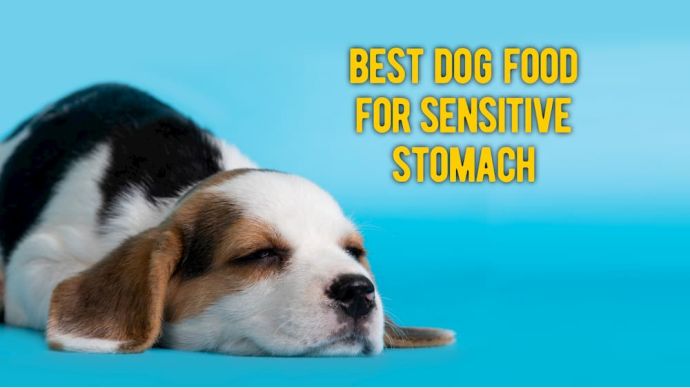 Dog Food Reviews The 10 Best Dog Food For a Sensitive Stomach (Vet Approved Review)
Dog Food Reviews The 10 Best Dog Food For a Sensitive Stomach (Vet Approved Review) - 690
- 0
 Dog Products & Toys Reviews The 10 Best Brush for Australian Shepherd: Review and Buying Guide
Dog Products & Toys Reviews The 10 Best Brush for Australian Shepherd: Review and Buying Guide - 13077
- 0









